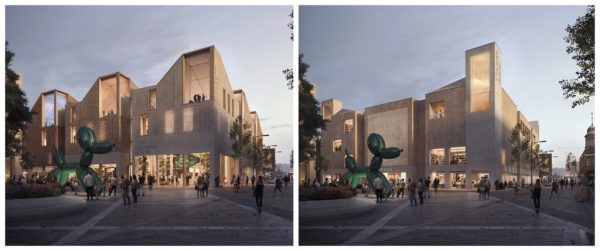FaulknerBrowns has presented plans for a £23 million culture house in Sunderland set to suit for the wider Riverside Sunderland revival masterplan’s centerpiece. Located the south side of Keel Square, the 7,300m² ‘civic landmark’ £23 million library hub will accommodate libraries for adults, young people and children as well as a local studies and archives centre, instructed learning and play spaces, creative labs, a café, galleries and a hall for exhibitions and performances.
The scheme, called the Culture House and backed by the council to replace a number of old buildings with the closed Corner Flag pub included, being significant to the government’s Future High Streets Fund (FHSF), £25 million successful bid. The bid is Sunderland’s drive part to transform its city centre economy.
Read also: King’s College Hospital to construct a £21 million new outpatient services building.
The ‘civic landmark’ £23m library hub project

The development of Culture House in Sunderland incorporates projects on land of 33.2ha on each side of the River Wear. Proctor & Matthews and FaulknerBrowns are the joint lead architects of the masterplan, which will eventually deliver 1,000 homes in its four quarters, doubling the population at the city centre. Designed for igloo Regeneration and Sunderland City Council, the masterplan sets out the re-establishment of a 33.2ha site on River Wear’s sides, building the UK’s first carbon-neutral urban quarter, constructing 1,000 modern homes with workplaces as well as community and cultural facilities and the Culture House.
FaulknerBrowns states that the brick-clad Culture House will possess a ‘strong sculptural form to produce an identifiable landmark’. The architect added that its mass, is ‘carved into smaller blocks, responding to the high street setting, with punched openings and towers demonstrated on the façades facing Keel Square’. The scheme’s design team will focus on 900 kgCO2/m² of embodied carbon for the shell, core and fit out constituents and operational carbon in line with RIBA 2030 Climate Challenge aim.
